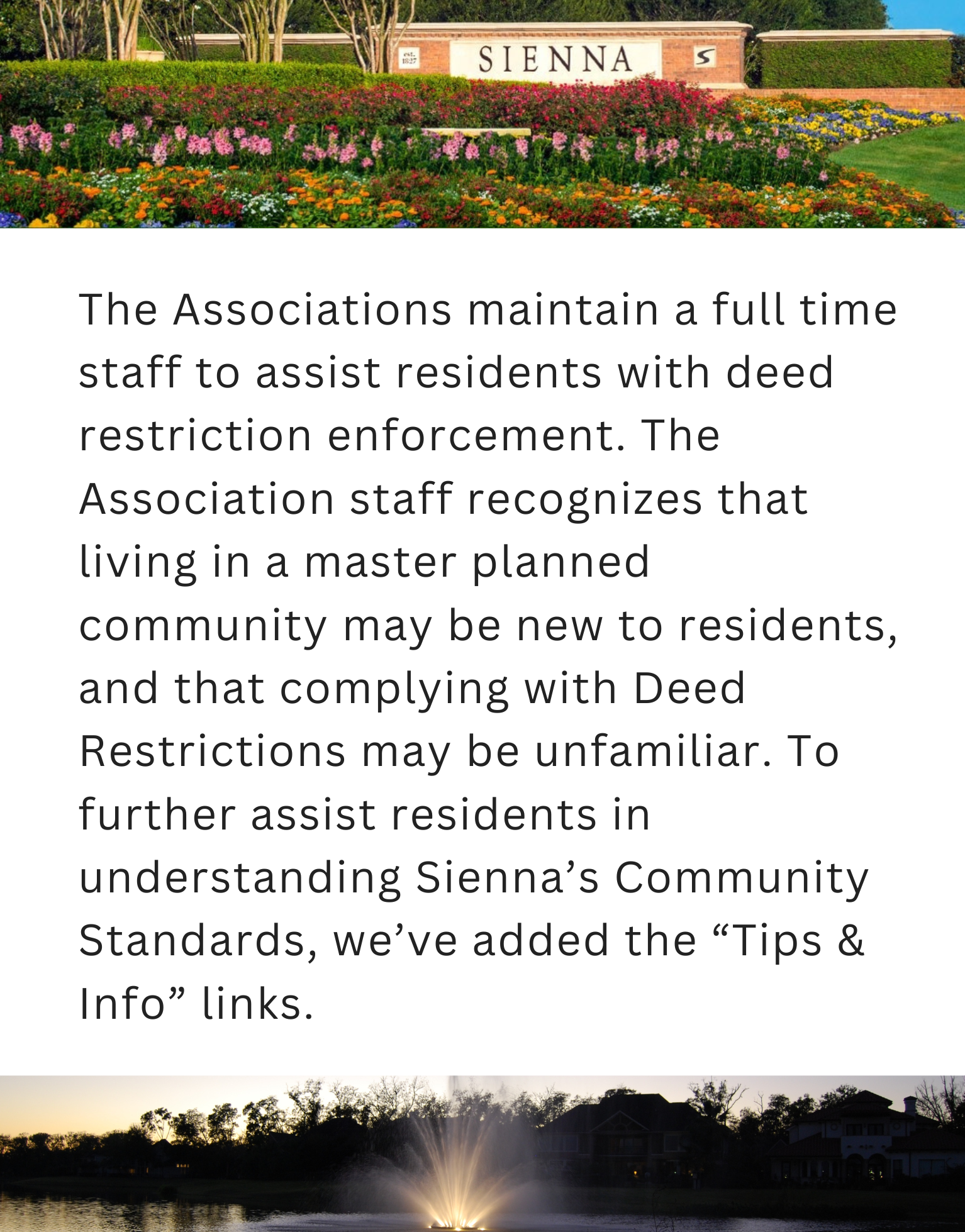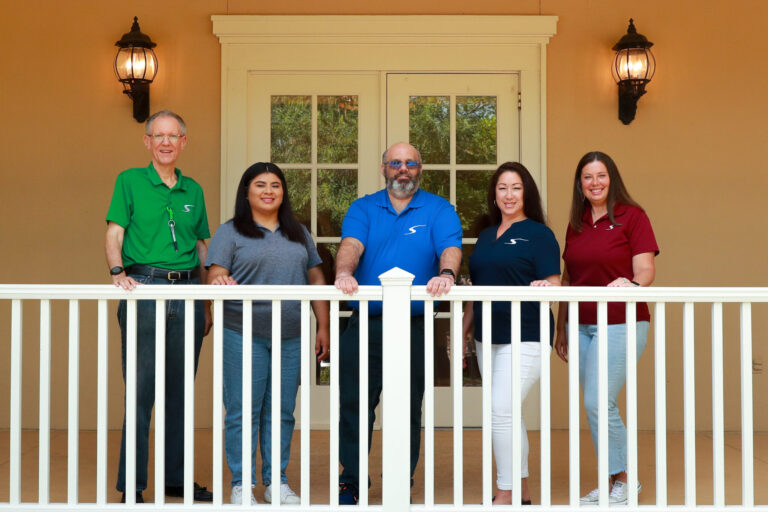Community Standards
Deed Restrictions
Contact us at CommunityStandards@clubsienna.com for information or deed restriction inquiries
One of the main functions of the Association’s Community Standards department is to ensure that all units, residential and non-residential, are in compliance with the governing documents and Deed Restriction Guidelines.
Tips and Information
A review of home plans, homesite plans, and modification application appeals.
The enforcement process regulated by Federal and State laws as well as governing documents and Board policies.
Includes specific restrictions applicable to development areas.
COC forms are completed online. Click above.

Required for all property sold, residential and commercial. Click above for details.
Go over the checklist above
and see if your property is ready.
Life Cycle of a Deed Restriction (DR) Violation
In order to enforce the community’s deed restrictions, the Associations inspect each neighborhood regularly, as well as non-residential properties. As a result of these inspections, a Deed Restriction letter may be sent to property owners identifying issues and requesting cooperation in correcting the noted issue(s) in a timely manner. It is the goal of the Associations to achieve compliance through education.
The Deed Restrictions Team
Contact us at CommunityStandards@clubsienna.com for information or deed restriction inquiries
Doug McGee
Community Standards Manager
Aubree Hinski
Sr. Community Standards Coordinator
Kelly Knight
Community Standards Coordinator
Michelle Fontenot
Community Standards Coordinator
Ingris Flores
Community Standards Coordinator
Anna Thottumkal
Community Standards Administrator


